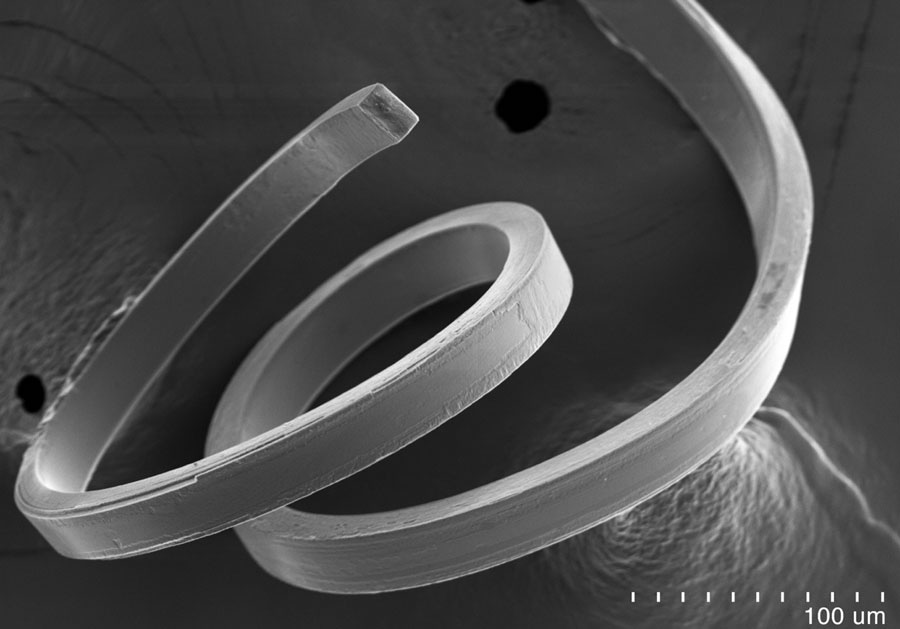Jan 17 2017
 A scanning electron microscopy image of flexible haloimidazole crystals, which were found to show both ferroelectric and piezoelectric properties. (Image by Seungbum Hong/Argonne National Laboratory.)
A scanning electron microscopy image of flexible haloimidazole crystals, which were found to show both ferroelectric and piezoelectric properties. (Image by Seungbum Hong/Argonne National Laboratory.)
Until recently, the term “flexible ferroelectrics” could have been thought of as the same type of oxymoronic phrase. However, a new discovery by the U.S. Department of Energy’s (DOE) Argonne National Laboratory in partnership with a research team at Northwestern University have enabled the creation of a new group of materials with latest functionalities that transform the idea from irony into reality.
Ferroelectrics are found in capacitors that are used in sensors, as well as RFID cards and computer memory. They are a useful type of material with special properties originating from the fact that they possess charged regions polarized in a specific orientation, which can be manipulated with an external electric field. However they have also had a big problem as engineers attempt to use them in new inventions.
Ferroelectric materials are known for being quite brittle, and so it has always been a big challenge to make them mechanically flexible, because ferroelectricity and this kind of flexibility are relatively rare properties to see on their own, to have both ferroelectricity and flexibility in this new material is basically unprecedented.
Seungbum Hong, Nanoscientist, Argonne National Laboratory
Hong explained that previous generations of ferroelectric materials were mostly ceramic, which made them quite brittle. The crystal planes in the new material are at atomic level and tend to slip past one another, boosting the ductility of the material.
One benefit of flexible ferroelectrics is the fact that ferroelectric materials are also piezoelectric, which means they can convert an electrical signal into applied mechanical force, or vice versa; for instance, when you flick a lighter to produce a spark. Ferroelectrics with more flexible would enable a better response from a smaller input.
With flexible ferroelectrics, researchers and engineers are given the opportunity to adapt these materials for a multitude of new and improved applications, including ultrasonic imaging sensors and emitters for medical applications, precision actuators for atomic force microscopy, and even sensors for certain automotive applications.
For data storage, the impact could be even more.
There’s a very large information density potential with ferroelectric storage. This could make a big difference as we think about future generations of the data cloud.
Seungbum Hong, Nanoscientist, Argonne National Laboratory
An article based on the research, “Flexible ferroelectric organic crystals,” was published online in Nature Communications in October 2016. One of the lead Northwestern authors of the study, Sir Fraser Stoddart, was awarded the 2016 Nobel Prize in Chemistry for his work on molecular machines.